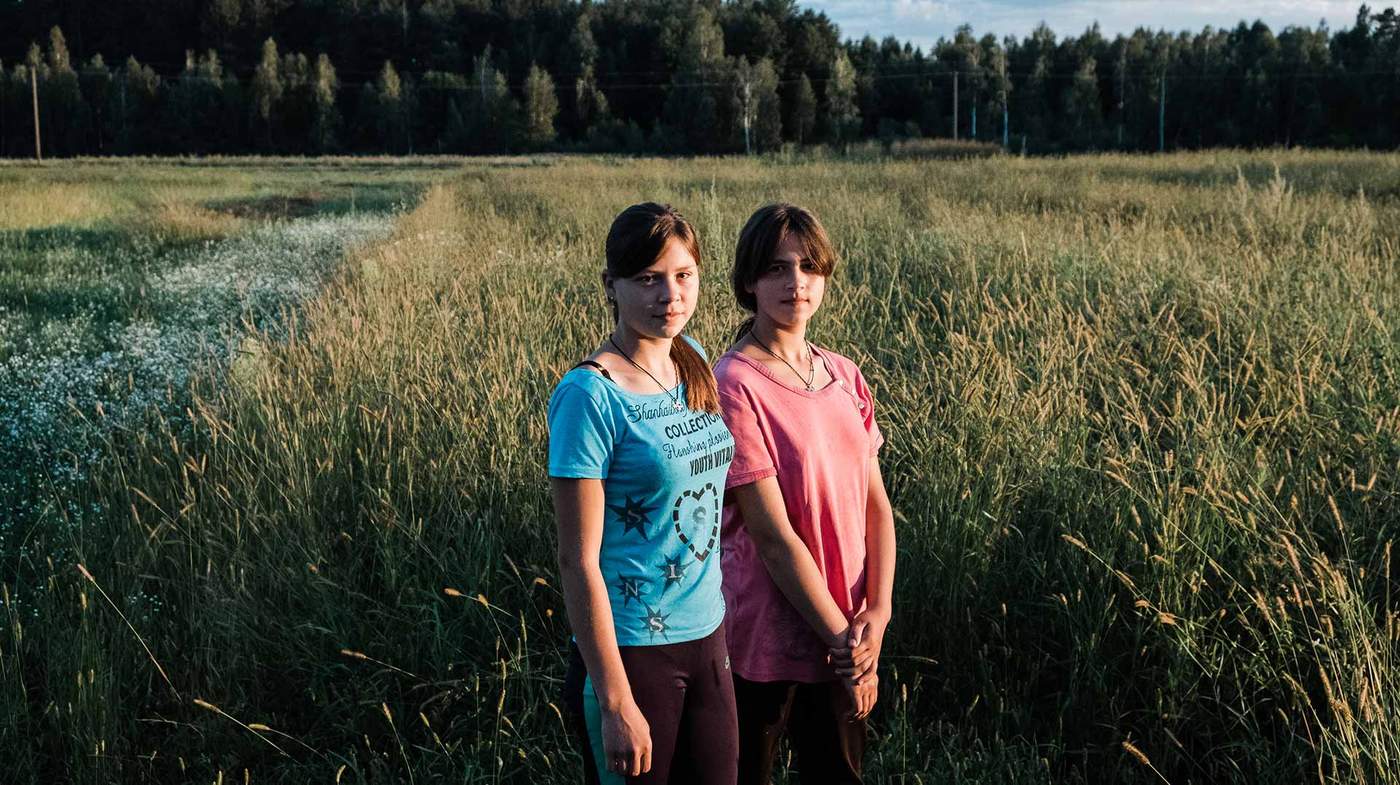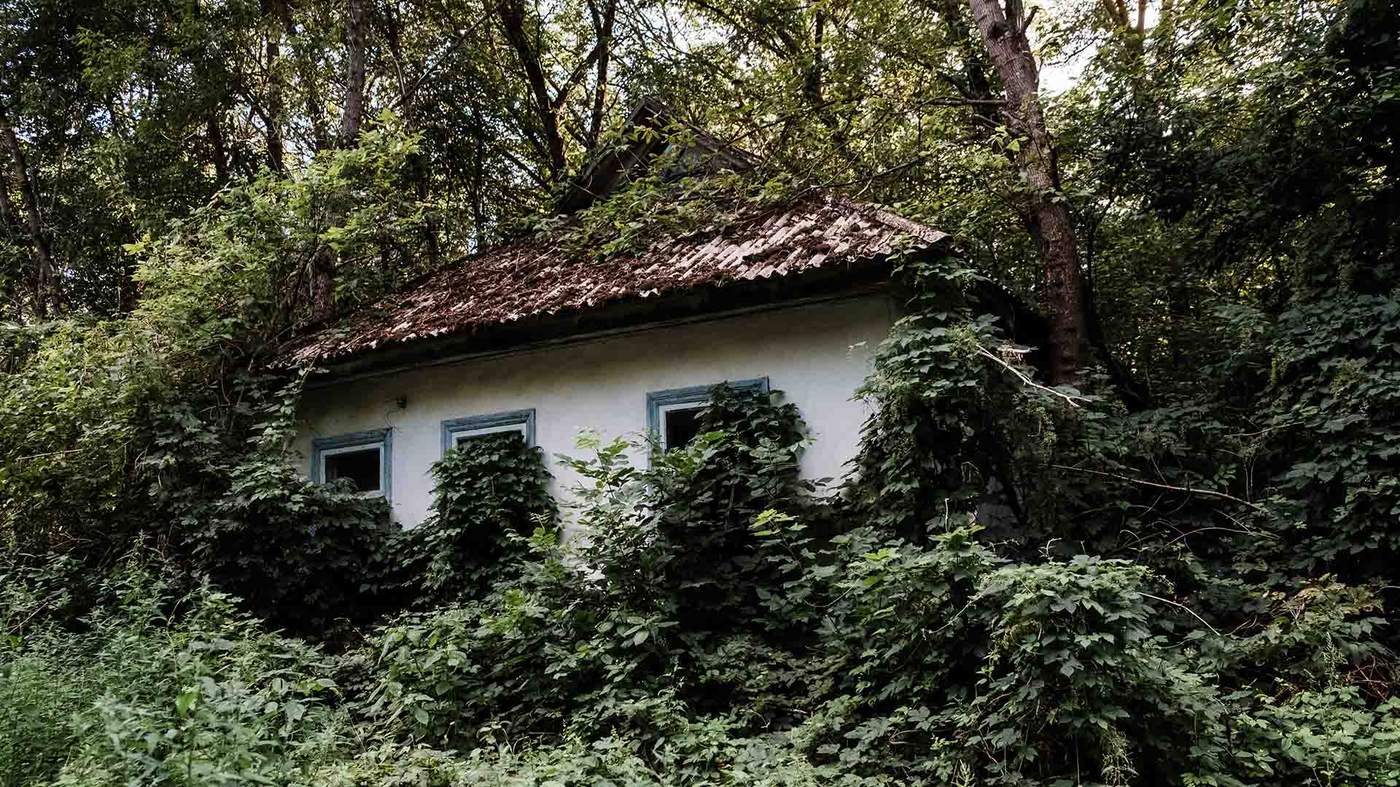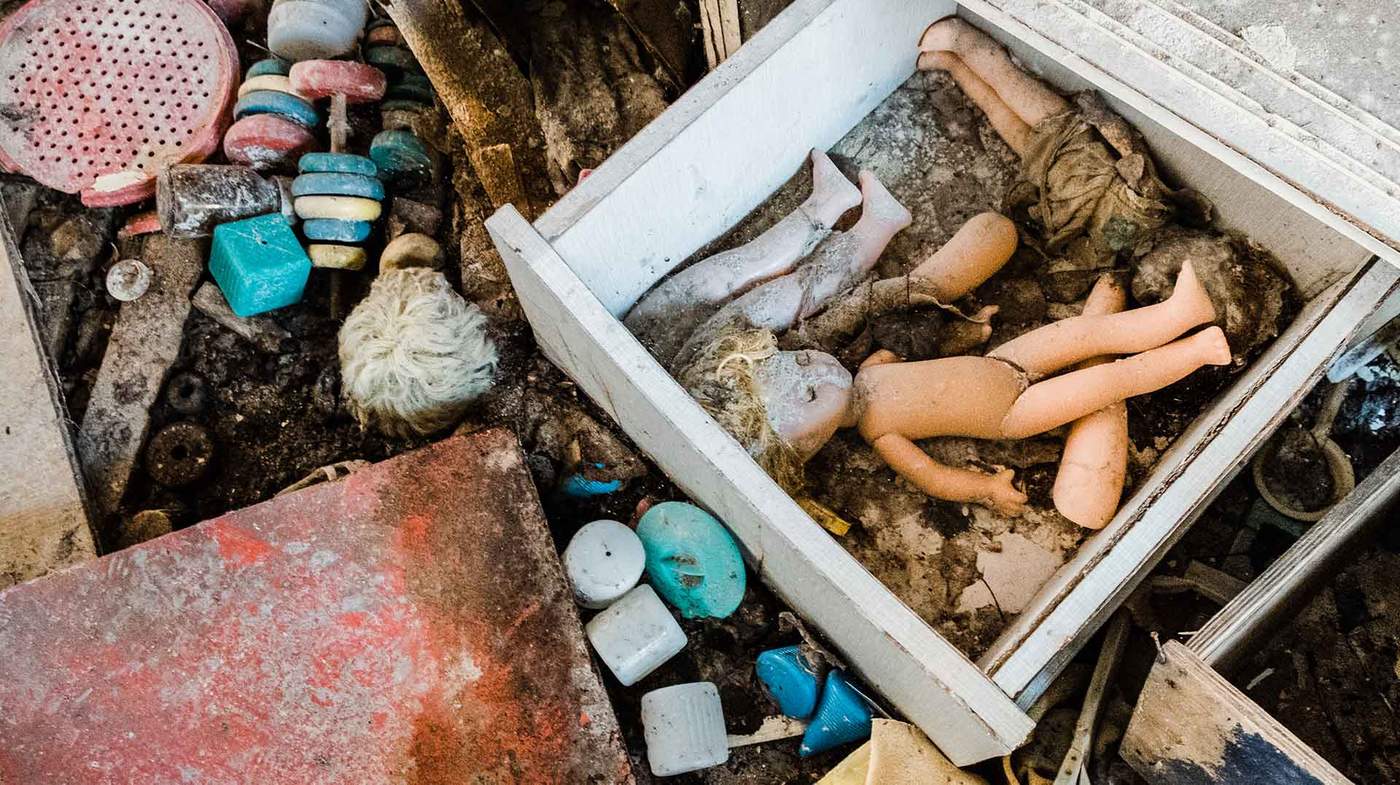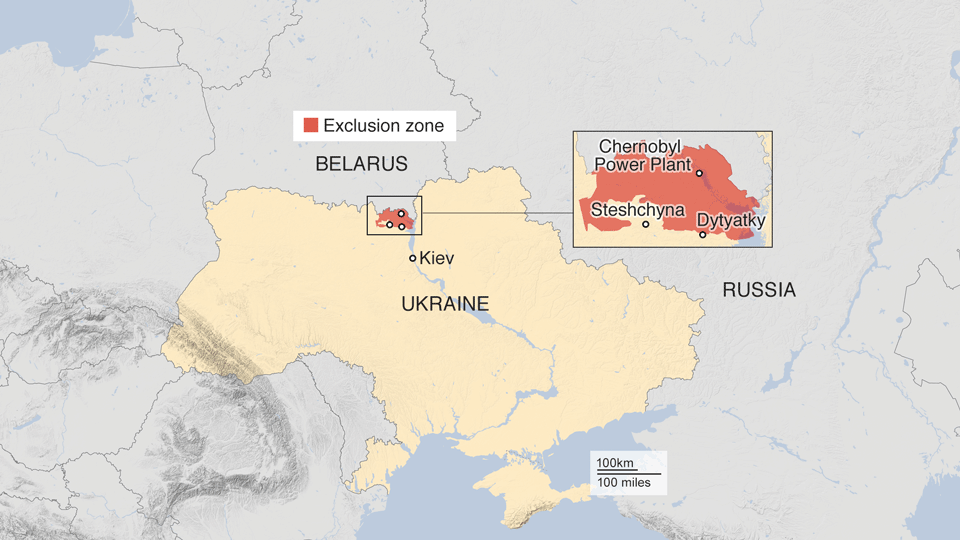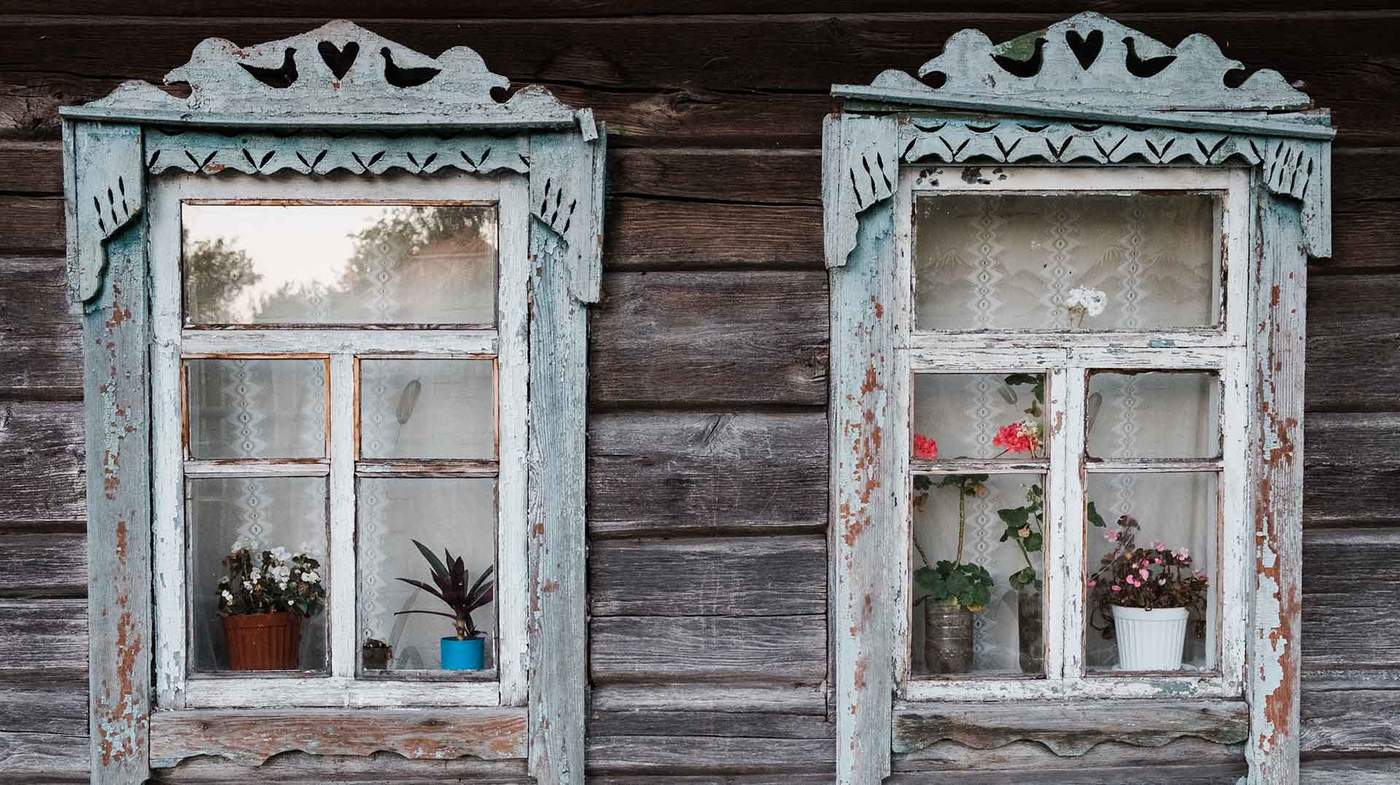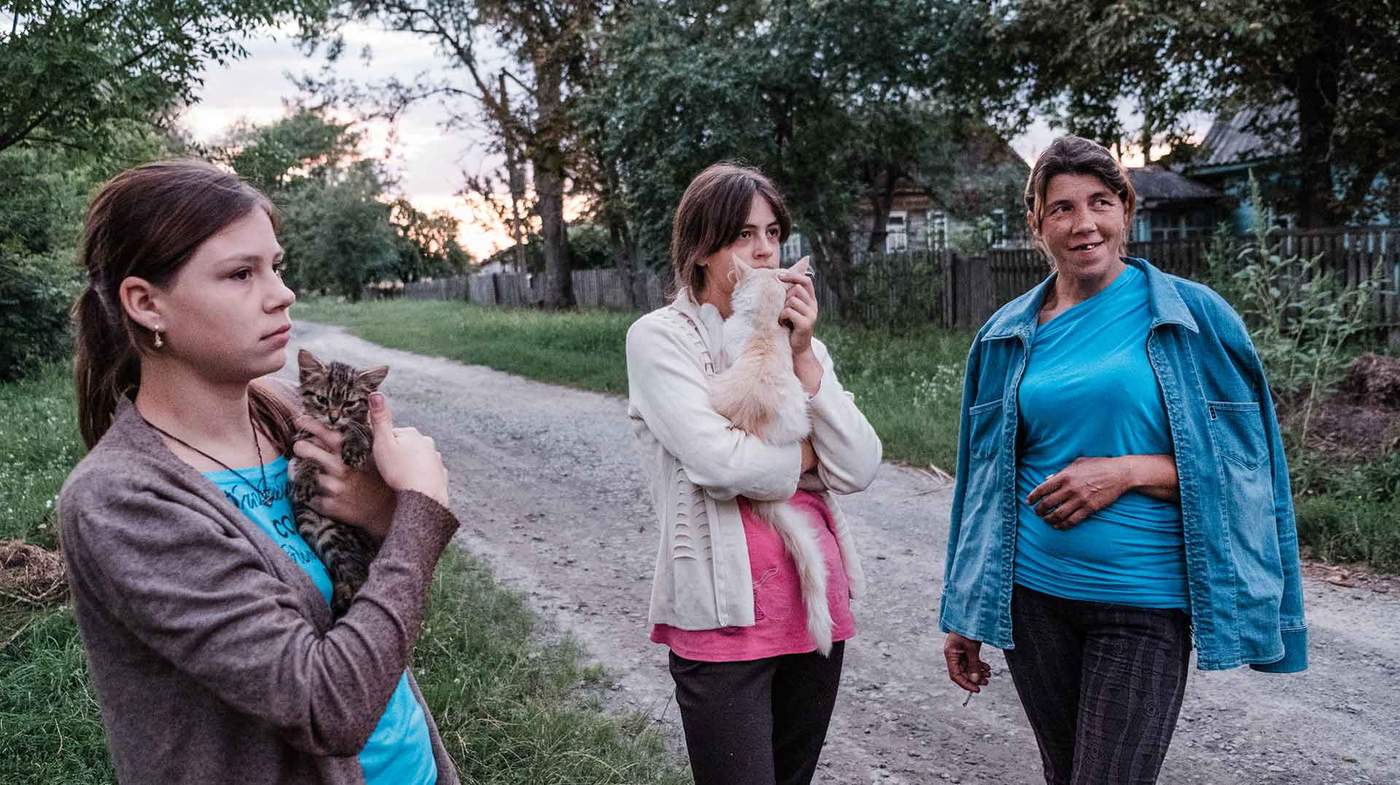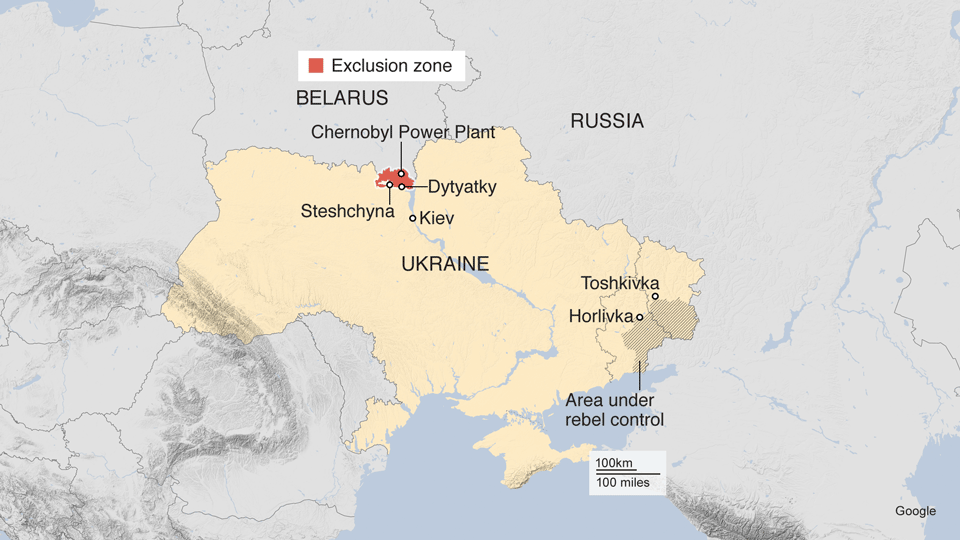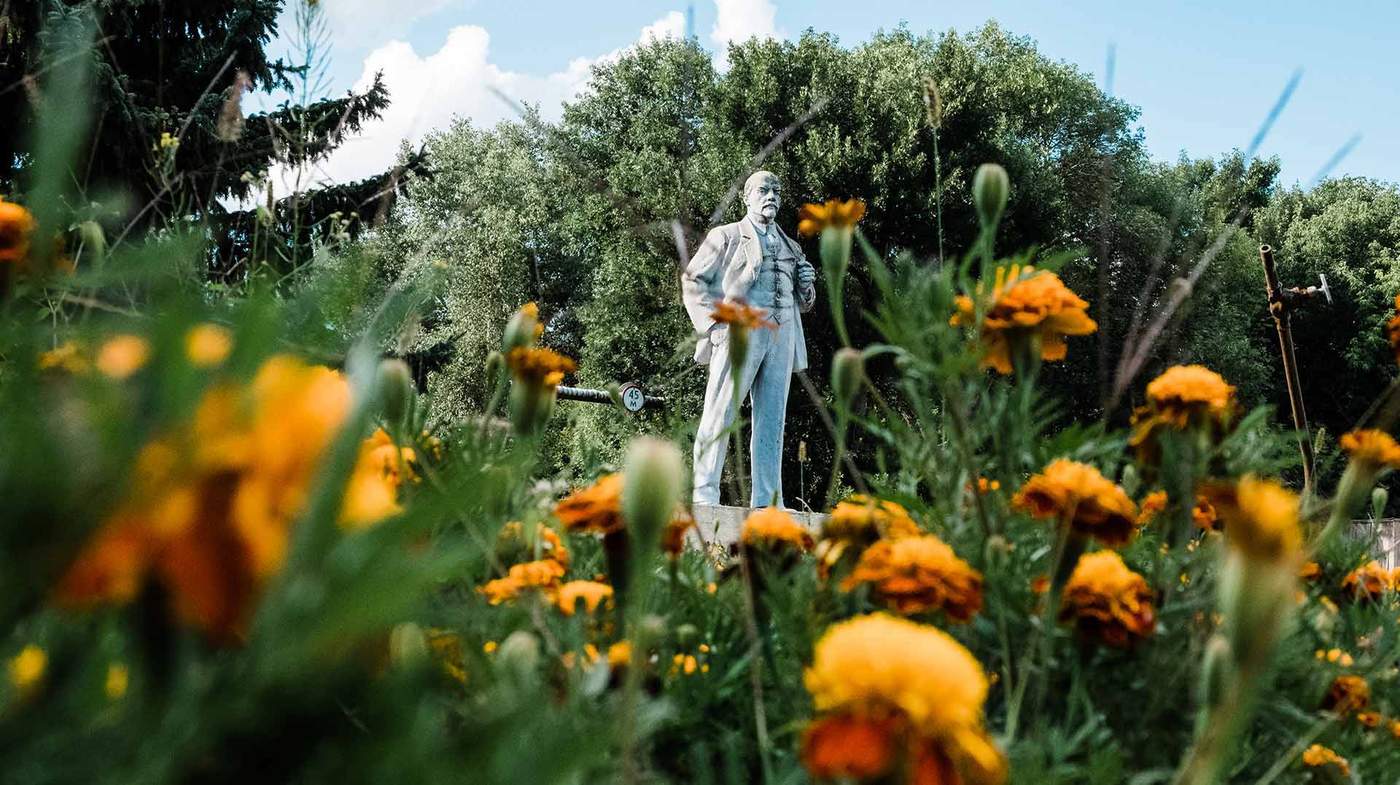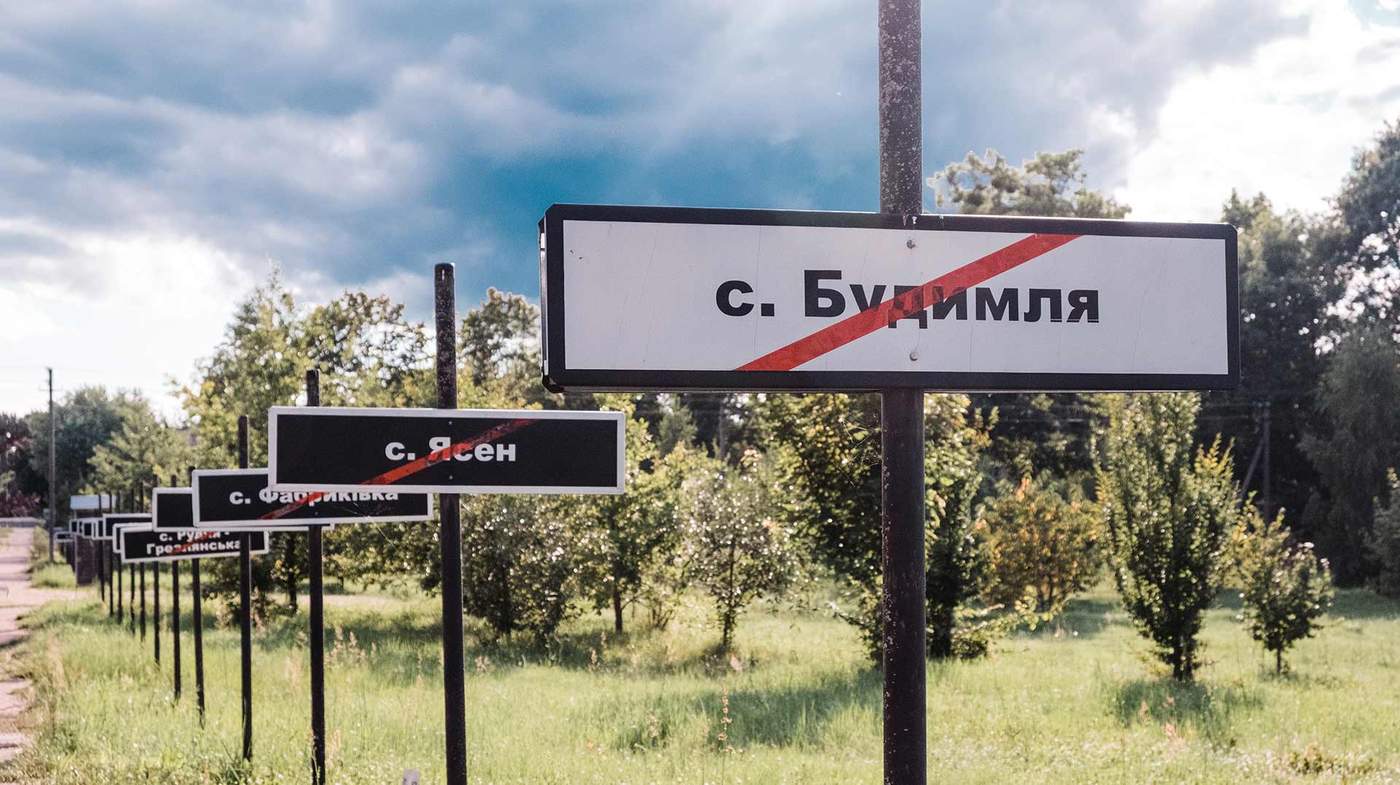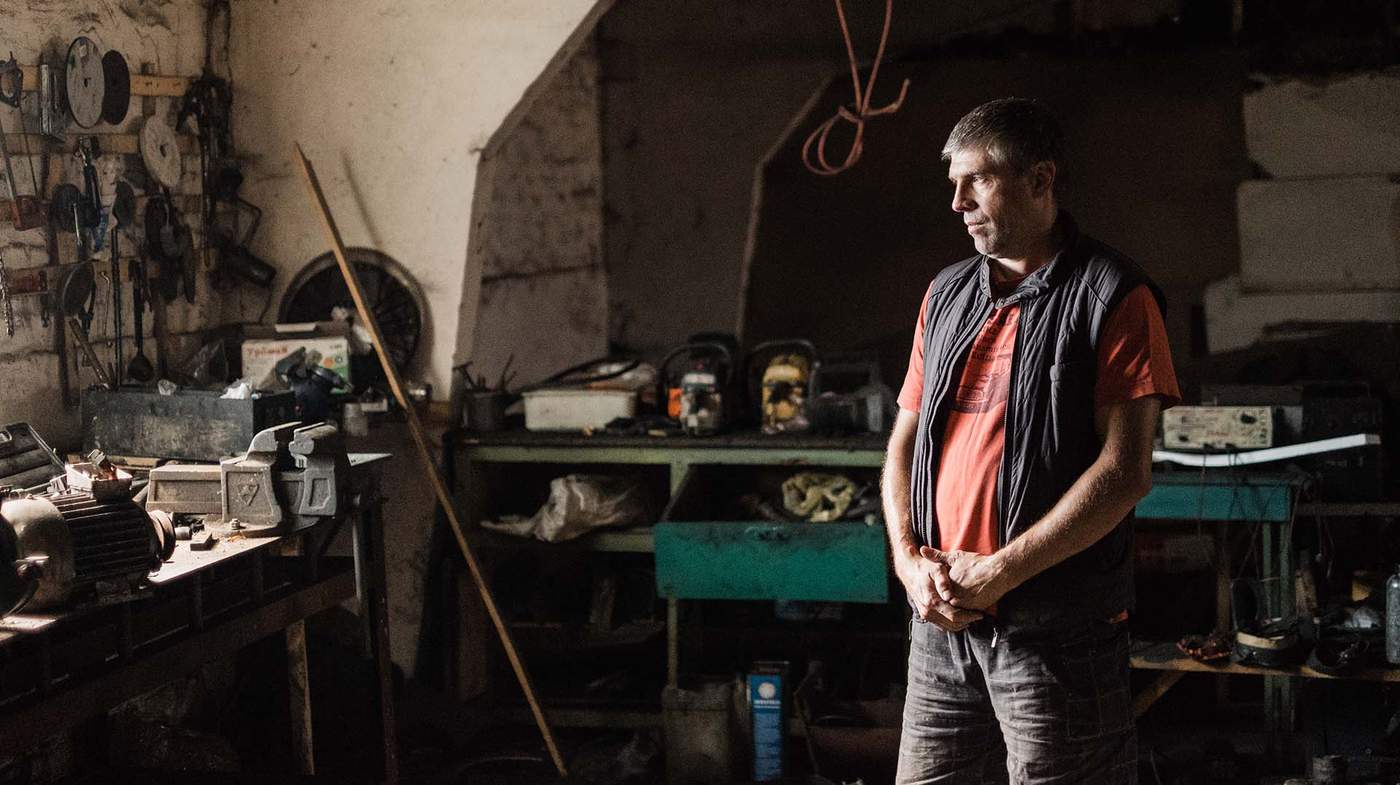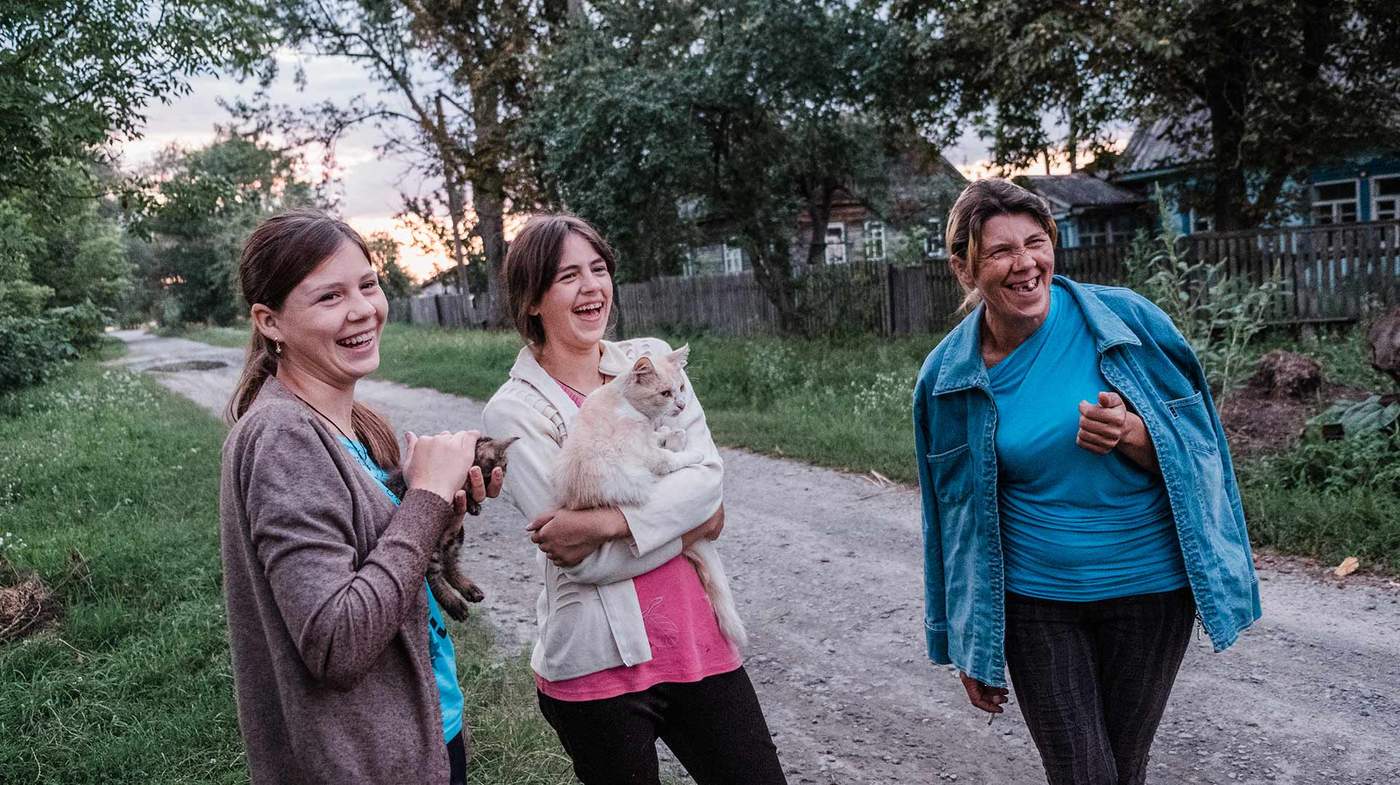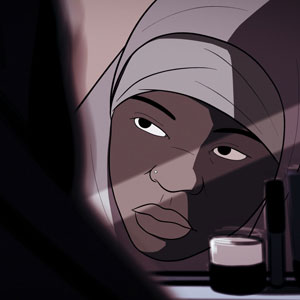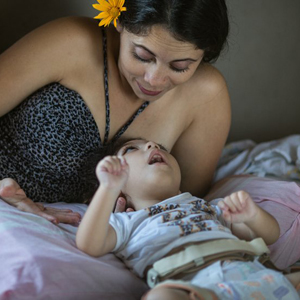On a warm summer's evening, Maryna Kovalenko is playing football with her two teenage daughters in their backyard.
Iryna and Olena laugh as the family dog attempts to wrestle away the ball, scattering the startled chickens.
But out beyond the family’s back fence, all is silent and still.

Numerous houses, a shop and a library stand vacant in the village of Steshchyna, northern Ukraine. Only the forest is gaining ground as creeping plants explore the cracks in this abandoned village.
The family do have a few neighbours, but almost all are in their 70s and 80s.
Despite the lack of amenities or opportunities, four years ago Maryna and her daughters packed up everything they owned and travelled hundreds of miles across Ukraine to live here - just 30km from the Chernobyl nuclear exclusion zone.
On 26 April 1986, Chernobyl suffered the world’s worst nuclear disaster.
An experiment designed to test the safety of the power plant went wrong and caused a fire which spewed radiation for 10 days. Clouds carrying radioactive particles drifted for thousands of miles, releasing toxic rain all over Europe.
Those living close to Chernobyl - about 116,000 people - were . A 30km exclusion zone was imposed around the damaged reactor. This was later expanded to cover more affected areas.
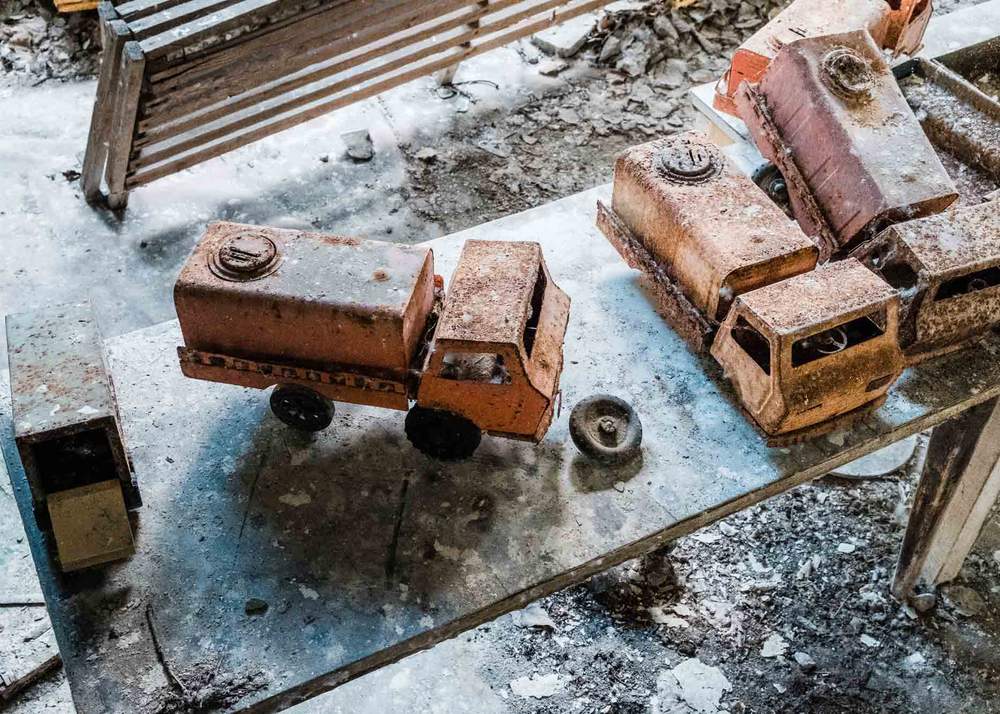
Toy trucks left behind in an abandoned nursery
Over the next few months a further 234,000 people were moved out. Almost all left in a hurry. Some were given just a few hours to pack up all their belongings. Others were told they would only be gone a few days, but were . Many of the evacuees, who were subsistence farmers, found themselves rehoused in concrete tower blocks.
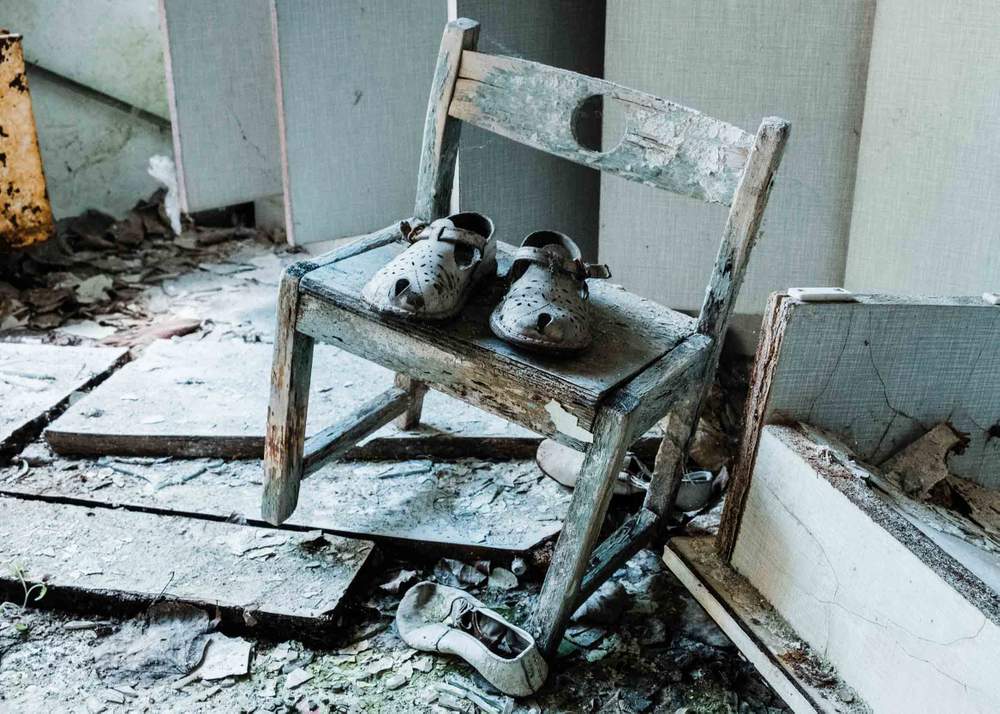
A child's shoes left behind in an abandoned nursery in the city of Pripyat
But some people never left.
Today it is still illegal to live inside the exclusion zone. Despite this, do. Many are women, still farming their ancestral land in their 70s and 80s.
And just outside of the exclusion zone, there are a number of new arrivals.
Maryna’s house is in desperate need of repair. The floors are rotting and the metal radiators have cracked - a major problem in a place where temperatures can drop to -20C in the winter.
They have basic amenities - gas, electricity and a mobile phone signal, which means they can access the internet. But they only have an outside toilet. Water is a problem - their only source is a polluted well which connects to the house via a single pipe. They need to boil all their water before it’s used.
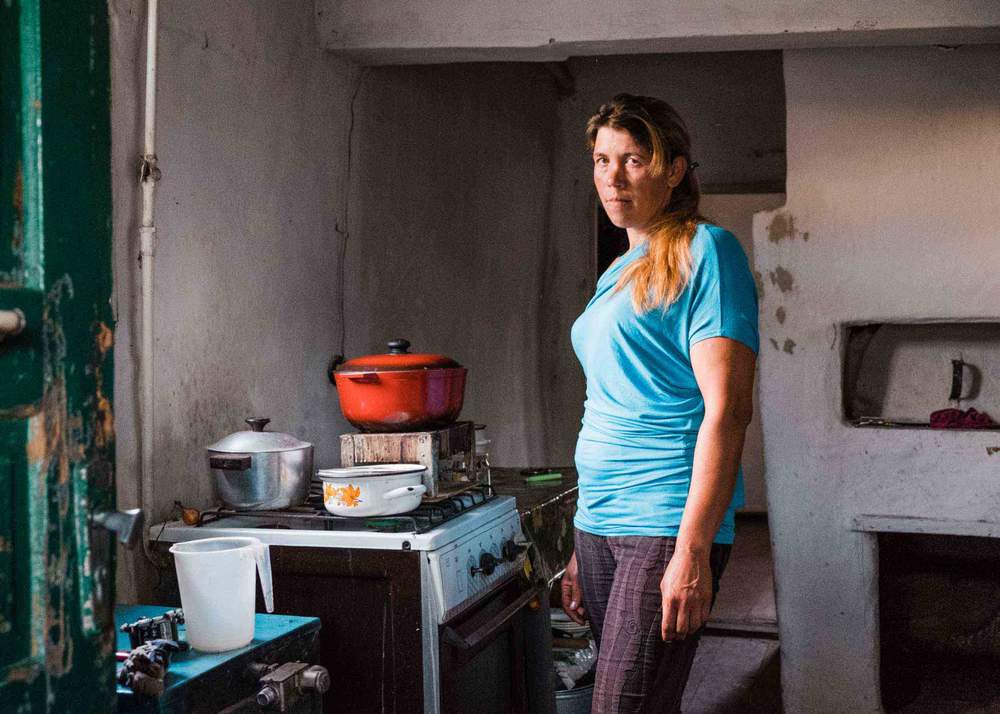
A house in good condition in the village might cost $3,500, but such properties are rare. Most of the vacant homes - many made of wood - are being sold by their former occupants for less than a few hundred dollars.
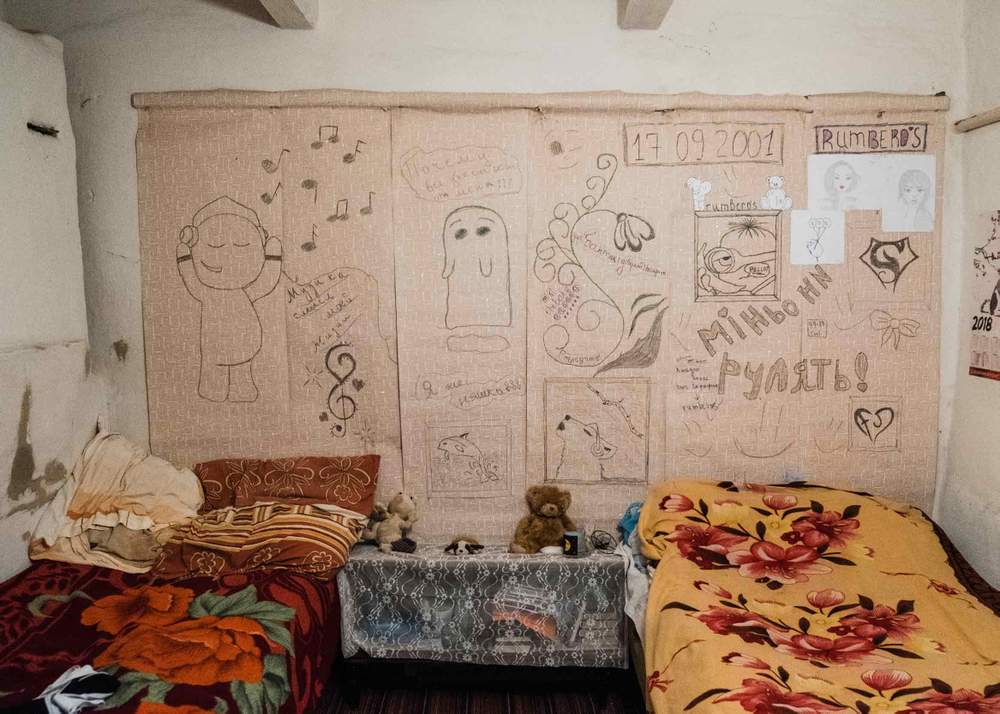
Iryna's sketches cover the walls of the sisters' bedroom
Maryna was too poor to buy even one of those when she arrived. Instead, the governing council offered her family an unusual house-share.
In return for their bed and board, the family cared for an elderly man in the late stages of dementia. When he died two years ago, the family inherited the house.
Outside in the yard, Iryna and Olena show off the rest of their “family” - several hens, rabbits, goats, even a couple of guinea-pigs.
When not at the school - a 5km walk away - the sisters spend much of their time helping mum in the garden, growing vegetables and looking after the animals.
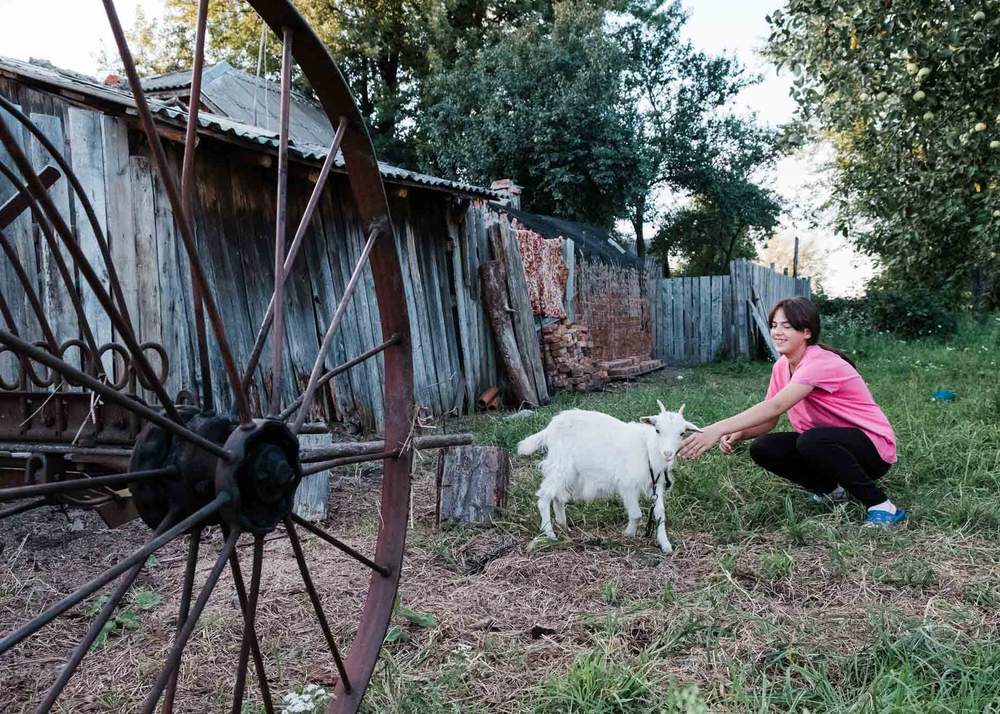
The family’s sole source of income is state benefits - $183 a month (5,135 Ukrainian hryvnia). Growing their own food and keeping livestock for milk and meat is essential on their budget.
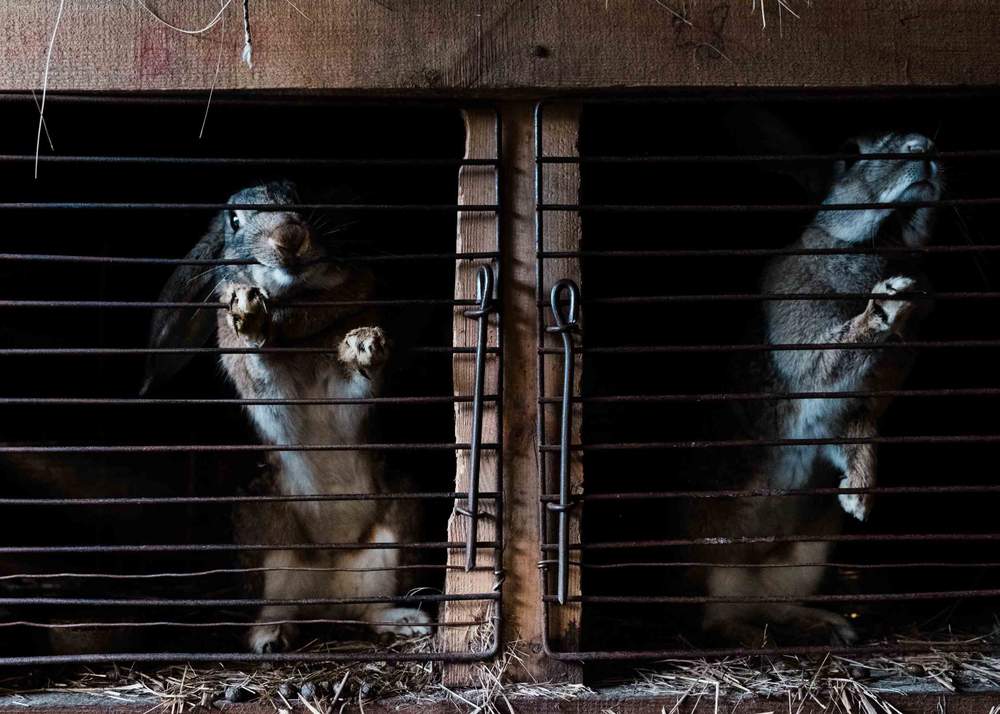
Maryna and her daughters fled from Toshkivka, a large industrial town in the Donbass region of eastern Ukraine. After four years of conflict in the east of the country, an estimated , and about two million displaced.
The conflict began in 2014.
After Russia’s annexation of the Crimean peninsula, armed separatists claiming to act on behalf of local Russian speakers in eastern Ukraine decided to act. Fighters declared two separatist enclaves around the cities of Donetsk and Luhansk in the Donbass, the heart of the Ukraine’s coal industry.
As pro-Russian separatists began capturing villages and driving the Ukrainian military out of the region’s towns and cities, Maryna and her daughters’ home came under heavy shelling.
Except for a few hours each morning, the bombardment was relentless. During these temporary ceasefires, everyone would attempt to regain some sense of normality. Iryna and Olena would go to school, while Maryna went to the market. But by noon, the firing would resume. Most nights were spent sheltering in the cellar.
Walking home from school during one such hiatus, Iryna and Olena were unexpectedly caught in crossfire. With mortars raining down, Maryna could not get to them. The girls owe their survival to a shopkeeper, who dragged them off the street and into the safety of her cellar.
That’s when Maryna decided they had to leave.
There are at least ten other families from the Donbass region who have made the same long journey to the abandoned villages close to the exclusion zone.
Like Maryna, most of them came on the recommendation of old friends or neighbours. One woman even says she simply Googled “cheapest place to live in the Ukraine”. The result - near to Chernobyl.
Since the disaster, scientists have been continuously monitoring the radiation levels in the soil, trees, plants and animals around Chernobyl, even in areas outside the exclusion zone.
There is no longer a risk from radiation in the atmosphere, says Dr Valery Kashparov, from the Ukrainian Institute of Agricultural Radiology (UIAR). But in some areas soil contamination could pose a threat to people’s health.
Kashparov and his team recently found potentially in cow’s milk produced in some areas outside the exclusion zone. Caesium particles, absorbed by grass roots, had been passed on to grazing cattle.
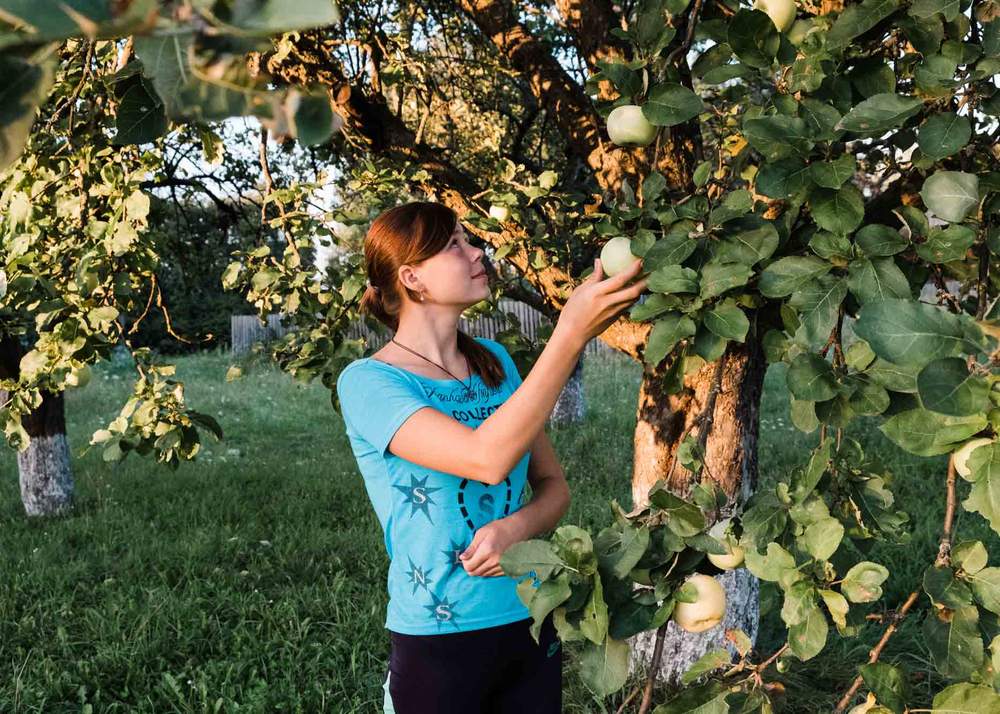
Olena picks apples from her garden
In large enough quantities, ingesting it can damage human cells, and in some cases lead to serious diseases such as thyroid cancer.
But these risks, Kashparov says, are confined to specific hotspots. For more than 30 years his team have been working to map such hotspots so they can estimate the potential risk for people living and working around the exclusion zone.
On one map, showing the dispersion of caesium-137 from the Chernobyl nuclear reactor, Kashparov looks at the village of Steshchyna where Maryna and her daughters live. He says the risk from growing vegetables or drinking goats’ milk in a place like Steshchyna is very low. But the area is currently being investigated for the risk of radiation in wild food stuffs, such as forest mushrooms or wild berries.
Maryna says she has thought about the potential risks from radiation, but that her family was fleeing from something much more dangerous - the threat of war.
"Radiation may kill us slowly, but it doesn't shoot or bomb us," says Maryna. "It's better to live with radiation than with war".
Background image: Declining caesium levels. Source: Ukrainian Institute of Agricultural Radiology
Since the disaster, scientists have been continuously monitoring the radiation levels in the soil, trees, plants and animals around Chernobyl, even in areas outside the exclusion zone.
There is no longer a risk from radiation in the atmosphere, says Professor Valery Kashparov, director of the Ukrainian Institute of Agricultural Radiology (UIAR). But in some areas soil contamination could pose a threat to people’s health.
Kashparov and his team recently reported produced outside the exclusion zone. Caesium particles, absorbed by grass roots, had been passed on to grazing cattle.
In large enough quantities, ingesting it can damage human cells, and in some cases lead to serious diseases such as thyroid cancer.
But these risks, Kashparov says, are limited to specific hotspots. For more than 30 years his team have been working to map such hotspots so they can estimate the potential risk for people living and working around the exclusion zone.
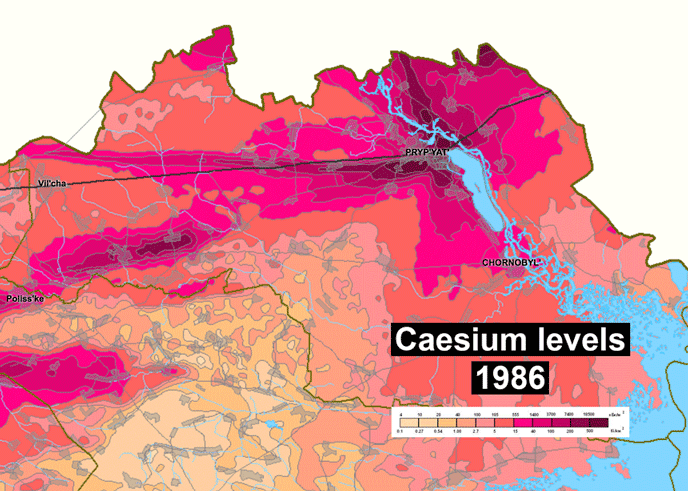
Declining caesium-137 levels. Source: Ukrainian Institute of Agricultural Radiology
On one map, showing the dispersal of caesium-137 from the Chernobyl nuclear reactor, Kashparov points out the village of Steshchyna where Maryna and her daughters live. He says the risk from growing vegetables or drinking goats’ milk in Steshchyna is very low. But the area is currently being investigated for the risk of radiation in wild food stuffs, such as forest mushrooms or wild berries.
Maryna says she has thought about the potential risks from radiation, but believes her family fled from something much more dangerous - the threat of war.
"Radiation may kill us slowly, but it doesn't shoot or bomb us," says Maryna. "It's better to live with radiation than with war".
Less than two hours’ drive from the capital Kiev, along the perimeter of the exclusion zone, it’s not just families looking for opportunities in these ghost towns, but also entrepreneurs.
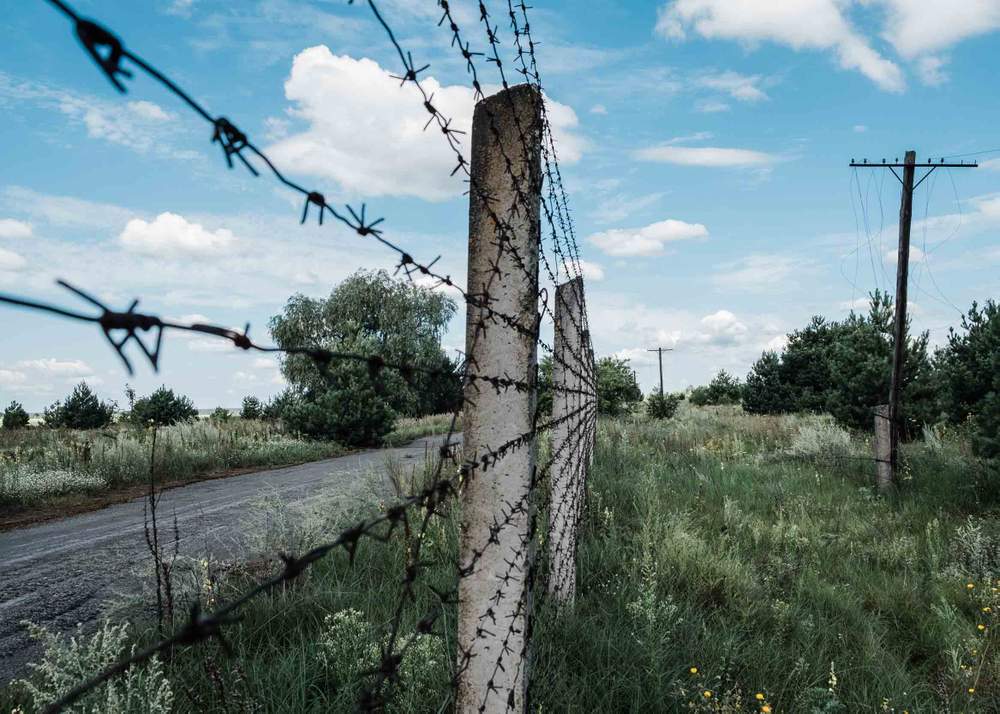
Every day Vadim Minzuyk walks his dog along the high wire fence marking out the beginning of the exclusion zone. It’s his favourite place to enjoy the birdsong and the quiet of the forest.
"It’s like living in the north of Finland or Alaska," says Vadim. "This area has the lowest population density of anywhere in Ukraine - only two people per square kilometre.”
In his former hometown of Horlivka, eastern Ukraine, Vadim was a businessman turning over a million dollars a year. But after the town ended up on the front line, pounded by artillery, his once-flourishing factories and warehouses were obliterated - some are just craters now.
Horlivka is still being fought over.
Vadim remembers looking out of his back window to see the rebels erecting a barricade right against his garden fence. Sometimes the two armies would be stationed only 100m apart.
For more than a year, his family endured daily ID checks at military checkpoints across the city. They saw dead bodies left lying along the roadside. They even witnessed a murder, when a man was pulled from the car right in front of them by rebels and shot dead in broad daylight.
After evacuating his children, Vadim and his wife soon followed. Driving out of Horlivka, they left everything behind them.
For several months, living off savings, Vadim travelled around Ukraine looking for ways for his family to start again. One day, he had a tip-off.
A relative had heard about cheap property for sale near Chernobyl. He went to see an abandoned grain silo in the village of Dytyatky. Lying right on the border of the exclusion zone, property was cheap, but it was also close enough to the capital city of Kiev (115km) to make it a viable business opportunity.
“The roof was leaking where locals had stripped it of all its metal. I met the owner, and we struck a cheap deal.”
Buying up the warehouse for $1,400, and a further three houses for just $240, he connected them all to the electricity grid and started up a smelting business.
“My strategy was to start a business by producing a product made out of waste.The first year was the most difficult, but over the last two years I feel much better."
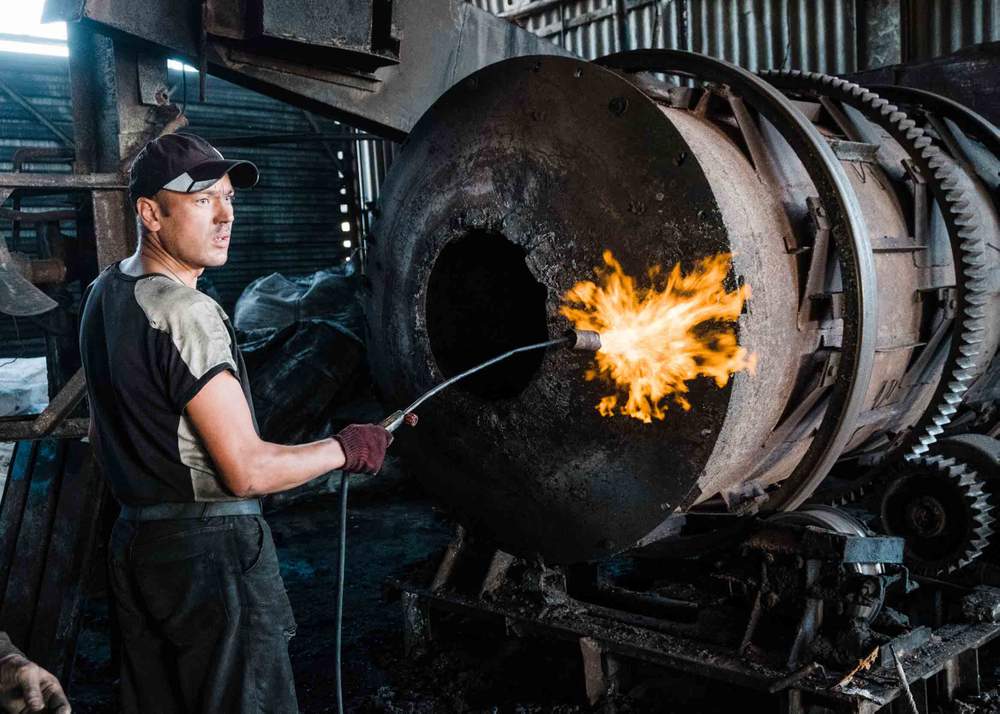
Vadim even re-employed seven of his former workers from Donbass, offering them accommodation by converting one of his houses into a hostel.
"I can make a living and help my workers to make money too. I’m the largest taxpayer here in the village. After all, I’m Ukrainian and I want to help my country.”
Vadim says he does sometimes think about the radiation. He even bought himself a handheld Geiger counter to measure it.
But he’s not worried. He is confident that the atmospheric radiation level is safe.
“After what you witness in war, radiation is nothing. It was a miracle we survived.”
He’s enjoying life here.
It’s not just the absence of war, but a special kind of peace.
Both Maryna and Vadim’s families talk about their love of taking long quiet walks in the forest.
Life may be basic, but neither family wants to move to a bigger town, even if it would mean more friends or opportunities. Their need for stillness after fleeing from the chaos of war is sobering.
"I don’t care about the radiation," says Maryna. "I only care that there are no shells flying over my children. It’s quiet here. We sleep well and we don’t need to hide.”
Vadim says his wife Olena sometimes likens parts of the derelict exclusion zone to their war-torn hometown of Horlivka. But there’s a clear distinction - here on the edge of the exclusion zone she believes their family has a future.
"I felt like we had lost it all," says Vadim. "But now, living here, things are getting better.”
